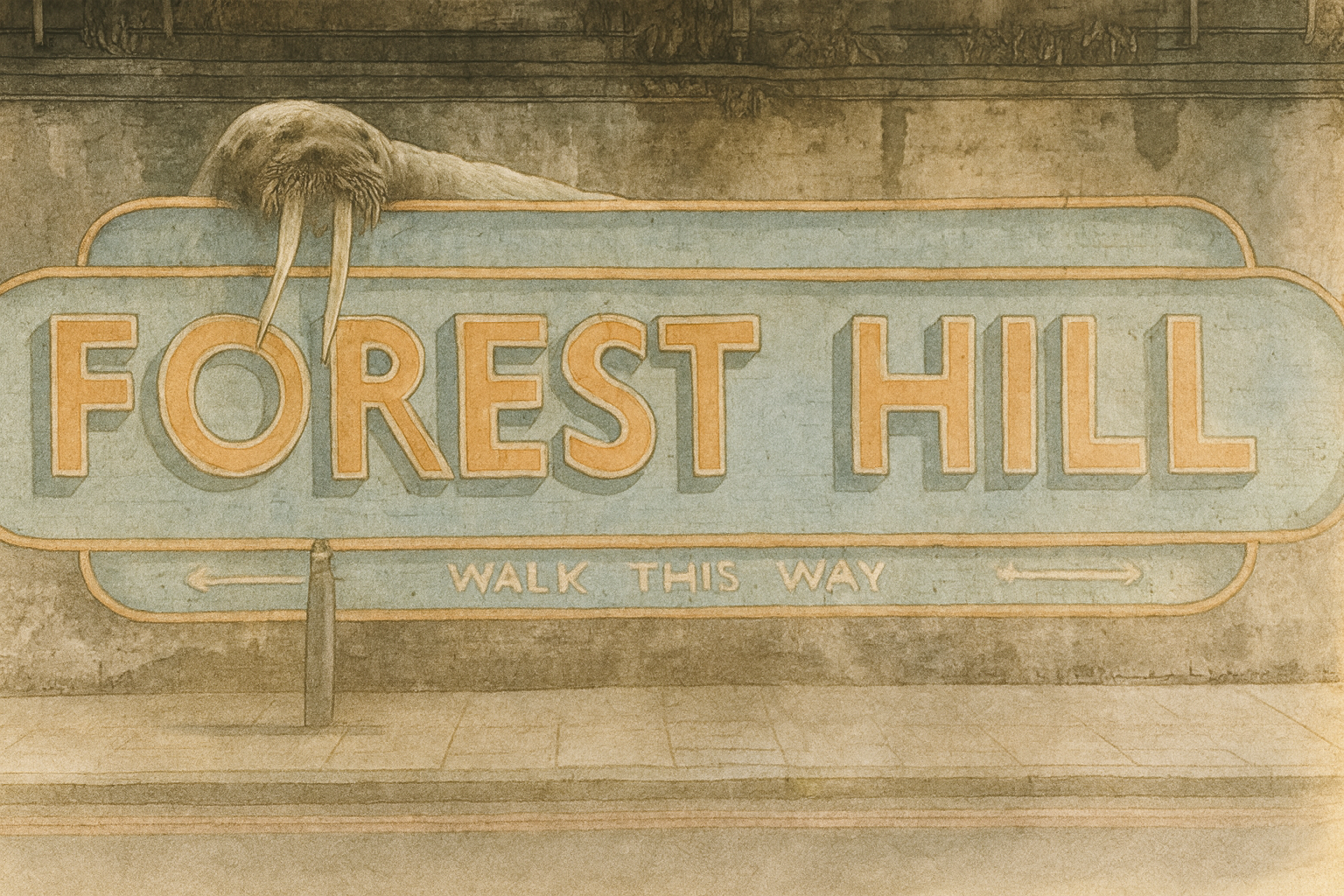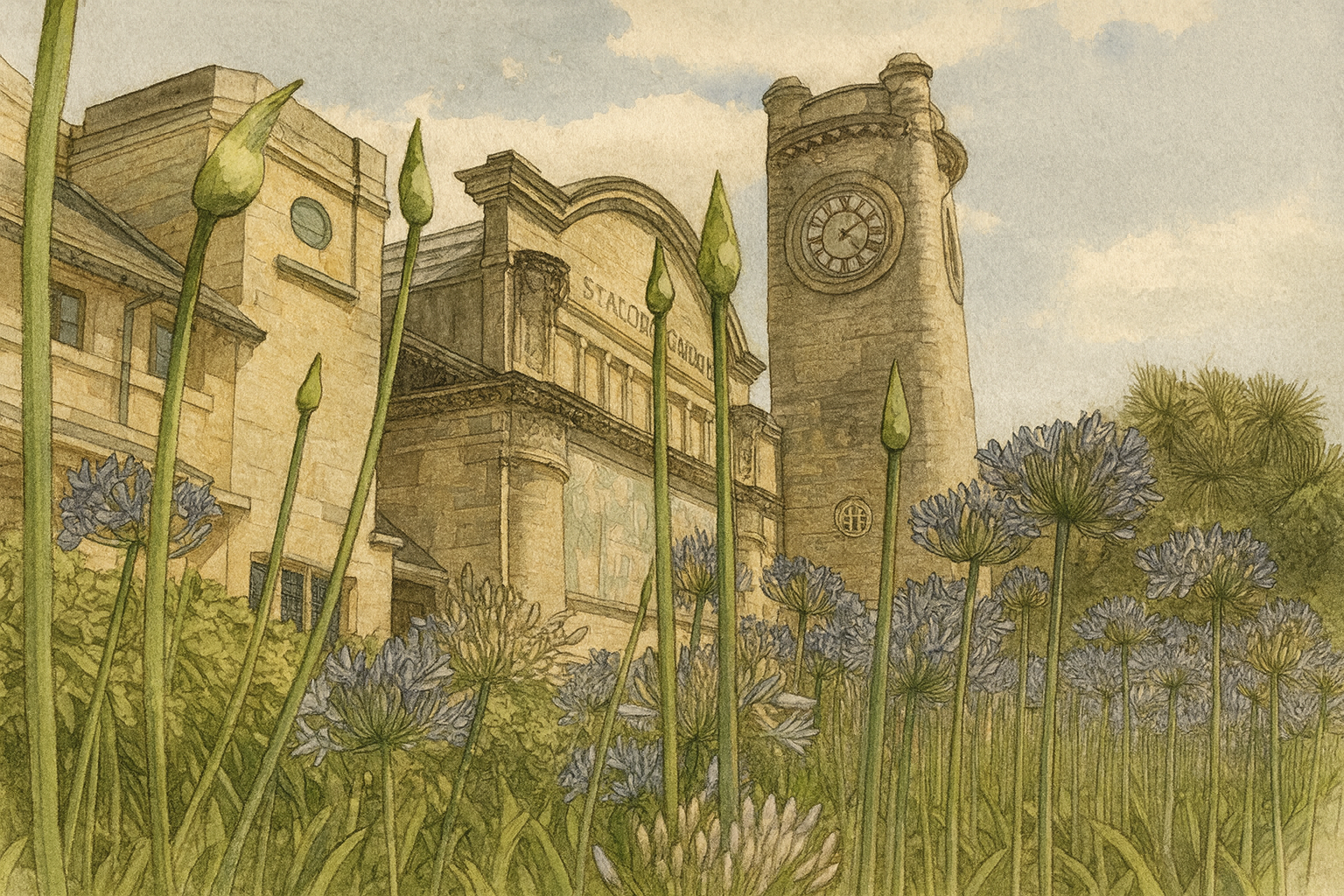Forest Hill is one of South East London’s most desirable neighbourhoods, combining leafy streets with a strong sense of community. Known for its hilly landscapes, period housing, and cultural gems like the Horniman Museum and Gardens, the area offers a unique mix of suburban tranquillity and urban convenience. Excellent transport links, outstanding schools, and a thriving local café and dining scene make Forest Hill especially attractive to families, professionals, and creatives. With its blend of Victorian architecture, modern developments, and green open spaces, Forest Hill remains a popular and growing choice for homebuyers and renters alike.
History & Regeneration
Forest Hill’s development is tied closely to London’s expansion in the 19th century, though its history stretches further back. Originally dense woodland forming part of the Great North Wood, the area remained sparsely populated until the early 1800s. The opening of the Croydon Canal in 1809 brought limited growth, but it was the arrival of the railway in 1839 that transformed Forest Hill into a thriving suburban community.
The name “Forest Hill” derives from its elevated position and historic woodland surroundings. Prior to the railway, the area was largely rural, with a handful of farms and cottages scattered across the hillside. The railway’s introduction made the district attractive to middle-class Londoners seeking a healthier, greener environment away from the crowded city centre. Large Victorian villas and terraced homes began to appear, giving Forest Hill much of its architectural character that remains today.
One of the area’s cultural landmarks, the Horniman Museum and Gardens, was founded in 1901 by Frederick Horniman, a Victorian tea merchant and philanthropist. His extensive collection of anthropology, natural history, and musical instruments became a public institution and remains at the heart of Forest Hill’s cultural identity. The museum and its surrounding gardens also helped cement the area as a desirable residential location.
During the 20th century, Forest Hill continued to grow with the addition of Edwardian and interwar housing, alongside post-war estates built to replace bomb-damaged areas from the Second World War. Despite these modern changes, the area has retained much of its original charm, with conservation areas protecting key parts of its Victorian and Edwardian streetscape.
Today, Forest Hill is a vibrant and well-connected community, balancing historic roots with modern amenities. Its blend of green open spaces, cultural attractions, and good schools continues to attract a diverse mix of families, professionals, and long-term residents.
Property Market & Architecture
Forest Hill’s property market is one of the most diverse in South East London, offering everything from Victorian terraces and Edwardian semis to stylish modern apartments. Each part of the area has its own community feel, quirks, and opportunities. We’ve advised buyers and sellers across them all and are always happy to share insights that go beyond the listings.
Victorian and Edwardian Homes
Forest Hill is best known for its beautiful Victorian villas, terraced streets, and Edwardian semis. Roads such as Dartmouth Road and Honor Oak Road showcase handsome period houses, many with large bay windows, high ceilings, and original fireplaces. These homes are especially popular with families seeking character and space.
1930s Suburban Developments
The interwar period saw the development of wider streets with 1930s semi-detached houses, particularly towards Honor Oak and the Perry Vale area. These properties often feature large gardens and driveways, making them ideal for growing families.
Ex-Local Authority Housing
Forest Hill has a number of well-maintained ex-local authority estates that provide affordable options for first-time buyers. Flats and maisonettes in these developments are typically spacious and attract steady rental demand.
Modern Apartments and New-Builds
Regeneration has brought stylish modern developments to Forest Hill, particularly near the station and along key routes like London Road. These flats are popular with young professionals who value proximity to transport and contemporary living spaces.
Honor Oak and Surrounding Areas
Just east of Forest Hill, Honor Oak offers slightly more affordable housing while retaining a strong sense of community. It is particularly popular among younger buyers looking for good-value Victorian conversions and family-sized homes.
The diversity of property styles means Forest Hill appeals to a wide spectrum of buyers and renters. Whether it’s a first flat, a family house, or an investment property, Forest Hill combines strong long-term growth prospects with a lifestyle that continues to attract new residents.
Local Amenities
- Horniman Museum and Gardens – World-renowned museum featuring anthropology, natural history, musical instruments, and a popular aquarium, surrounded by landscaped gardens with panoramic views of London.
Forest Hill Pools and Leisure Centre – Modern facility offering swimming, gym, and fitness classes.
High Street Shopping – Independent shops, cafés, and supermarkets line Dartmouth Road and London Road, offering a balance of convenience and community charm.
Annual Events & Traditions
Forest Hill is a neighbourhood where culture and community meet.
- Horniman Museum Summer Festival – Music, food, and family-friendly activities.
Forest Hill Fashion Week – Celebrating local designers and boutiques.
SEE3 Events – Community markets and pop-ups across Forest Hill, Sydenham, and Kirkdale.
Best Places to Eat & Drink
- Canvas & Cream – A popular café-restaurant and gallery.
St David Coffee House – Independent café with locally roasted coffee.
The Dartmouth Arms – Traditional pub with gastropub dining.
Bona Sourdough Pizza – Family-run Italian serving wood-fired pizza.
The Sylvan Post – Quirky bar set in a converted Post Office, known for cocktails and craft beers.
Museums & Parks Nearby
- Horniman Gardens – Historic landscaped gardens with views over London.
One Tree Hill – Local nature reserve with woodland walks and city skyline views.
Blythe Hill Fields – Wide open parkland with sports facilities and playgrounds.
Transport Links
- Rail & Overground – Forest Hill Station (London Overground to Shoreditch High Street; National Rail to London Bridge in 15 minutes).
Buses – Regular routes to Lewisham, Dulwich, Peckham, Crystal Palace, and central London.
Roads – Close to South Circular (A205) connecting to A2 and A23.
Cycling – Quietway routes and direct cycle paths into central London.
Culture & Community
Forest Hill has long attracted creatives and families who value culture and community. The Horniman Museum anchors the area’s identity, offering exhibitions, concerts, and workshops. Independent galleries and studios thrive, while pubs and cafés often host live music and comedy. The Bob Hope Theatre in nearby Eltham and cultural venues in Dulwich and Peckham expand the offering further. Forest Hill’s mix of cultural vibrancy and suburban calm makes it a truly distinctive place to live.
Schools & Education
- Fairlawn Primary School – Ofsted Outstanding.
Eliot Bank Primary School – Ofsted Good.
Horniman Primary School – Ofsted Good.
Sydenham School (secondary) – Ofsted Good.
Forest Hill School (secondary) – Ofsted Requires Improvement but improving.
Kingsdale Foundation School (nearby in Dulwich) – Ofsted Outstanding.
Playgrounds
- Horniman Gardens Play Area.
Blythe Hill Fields Playground.
Mayow Park Playground (nearby Sydenham).
Running Clubs & Fitness
- Gyms – Energie Fitness Forest Hill, Snap Fitness, and Forest Hill Pools Gym.
Running Clubs – Dulwich Runners, GoodGym Lewisham (running combined with volunteering).
Triathlon Clubs – Greenwich Tritons, based nearby, welcoming all levels.
Parkrun – Nearest events at Dulwich Park and Hilly Fields Park.
Basketball – Courts at Honor Oak Recreation Ground and Blythe Hill Fields.
Why Live in Forest Hill?
Forest Hill offers an appealing mix of character homes, excellent transport, and strong community spirit. Buyers are drawn to its Victorian and Edwardian properties, while modern flats provide options for first-time buyers. Families value the green spaces, good schools, and cultural attractions, while investors benefit from consistent rental demand. With its proximity to central London balanced by a relaxed suburban feel, Forest Hill provides excellent value and long-term potential.
Buying, Selling & Letting Advice
Forest Hill continues to offer excellent value compared to nearby Dulwich or Clapham, while retaining similar attractions. Buyers should consider proximity to the station and local schools for maximum growth. Sellers benefit from strong demand, particularly for period homes. For landlords, Forest Hill appeals to young professionals seeking Overground links and families looking for schools and green space.
MA-Residential, your trusted estate agent for Forest Hill, Bell Green and SE23 homes



